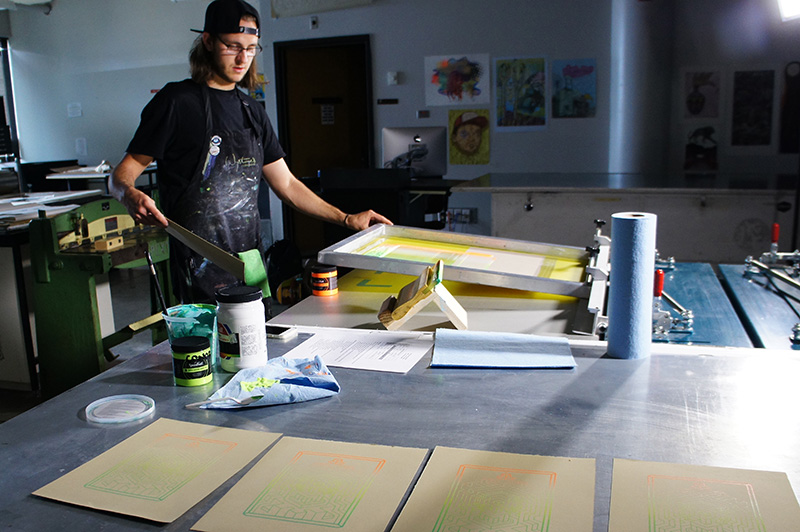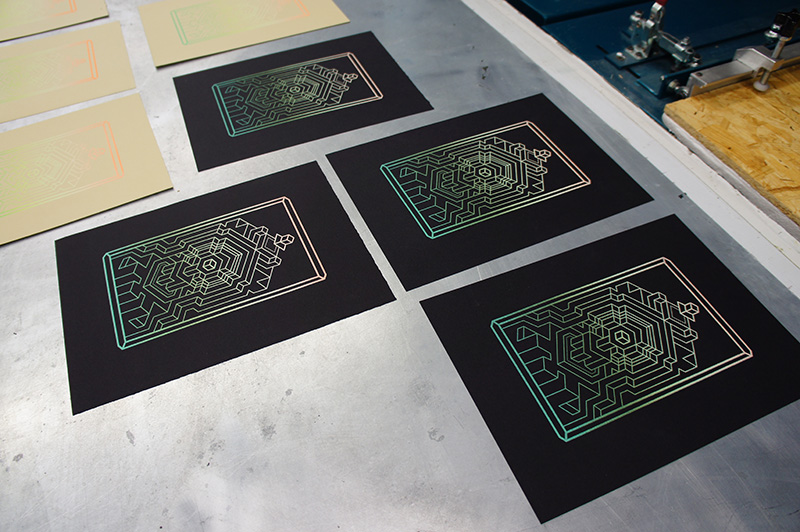This blog is one of a six-part series highlighting the processes behind printmaking and the art shown in the exhibition that was on view May 26 – July 22, 2017 titled 528.0. See our YouTube channel for more printmaking videos over the coming weeks.
Screen printing is one of the most versatile printmaking processes because anything flat can be printed on, and facilities are as complex as a commercial press with multiple screens or as simple as clamps mounted on a board. Conor Baldry is a recent MSU Denver graduate with a BFA in Printmaking who shows us the basics of screen printing. Using a vacuum table, screen, and ink, Conor goes through the steps of creating an original print with his design.

Screen printing starts by coating a screen with a light-sensitive emulsion. Using an exposure unit and an image stencil made from rubylith or a transparency, the design is burned into the emulsion by a bright light. This process allows ink to pass through the mesh in desired areas while blocking the ink from going through in other areas. Flooding the screen loads the mesh with ink and allows the printmaker to then pull the squeegee across the screen creating a print. This process can be repeated to create a series of prints with a consistent and controlled look.

What items that you use every day to you think have been screen printed?
